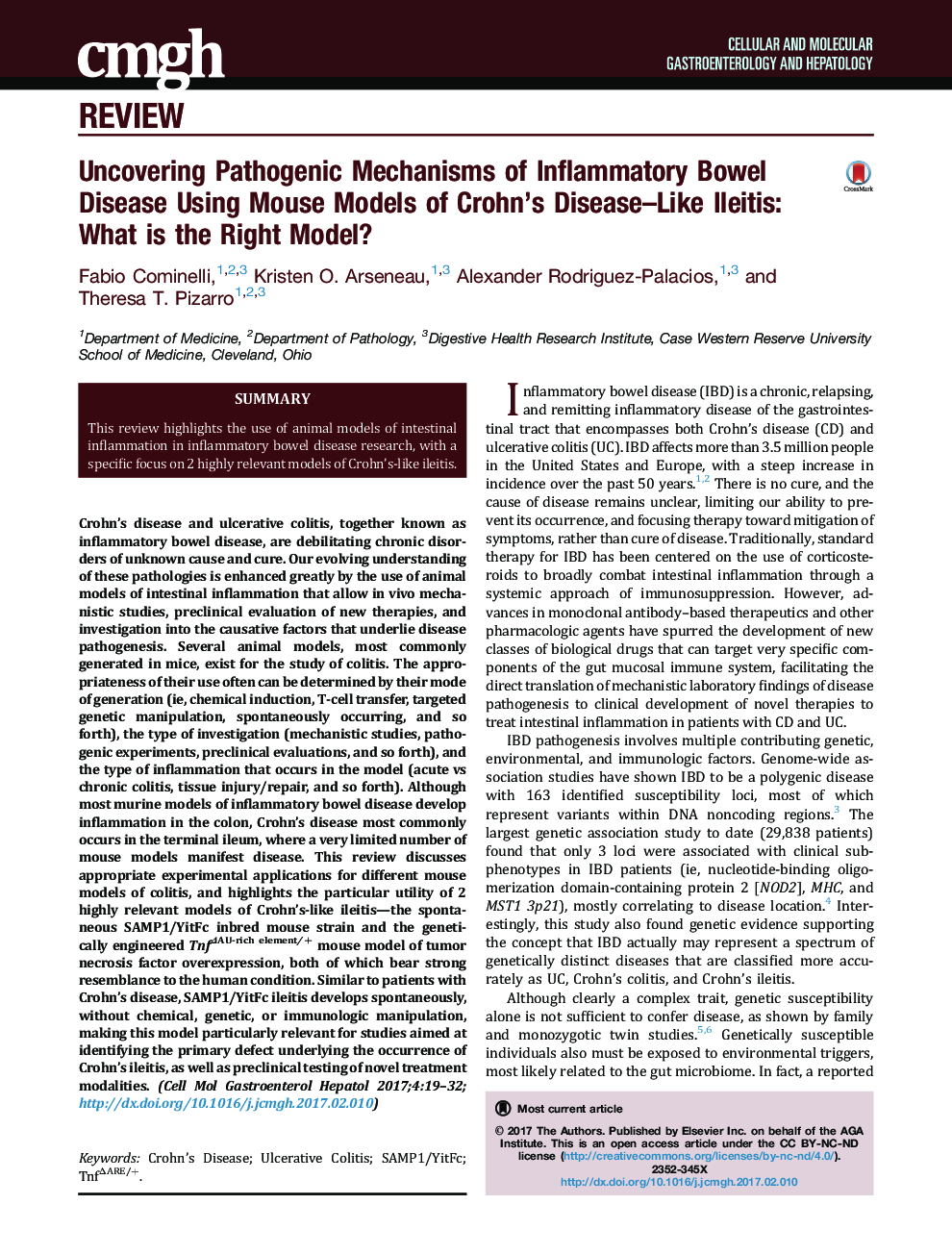| کد مقاله | کد نشریه | سال انتشار | مقاله انگلیسی | نسخه تمام متن |
|---|---|---|---|---|
| 5517176 | 1400954 | 2017 | 14 صفحه PDF | دانلود رایگان |

Crohn's disease and ulcerative colitis, together known as inflammatory bowel disease, are debilitating chronic disorders of unknown cause and cure. Our evolving understanding of these pathologies is enhanced greatly by the use of animal models of intestinal inflammation that allow in vivo mechanistic studies, preclinical evaluation of new therapies, and investigation into the causative factors that underlie disease pathogenesis. Several animal models, most commonly generated in mice, exist for the study of colitis. The appropriateness of their use often can be determined by their mode of generation (ie, chemical induction, T-cell transfer, targeted genetic manipulation, spontaneously occurring, and so forth), the type of investigation (mechanistic studies, pathogenic experiments, preclinical evaluations, and so forth), and the type of inflammation that occurs in the model (acute vs chronic colitis, tissue injury/repair, and so forth). Although most murine models of inflammatory bowel disease develop inflammation in the colon, Crohn's disease most commonly occurs in the terminal ileum, where a very limited number of mouse models manifest disease. This review discusses appropriate experimental applications for different mouse models of colitis, and highlights the particular utility of 2 highly relevant models of Crohn's-like ileitis-the spontaneous SAMP1/YitFc inbred mouse strain and the genetically engineered TnfÎAU-rich element/+ mouse model of tumor necrosis factor overexpression, both of which bear strong resemblance to the human condition. Similar to patients with Crohn's disease, SAMP1/YitFc ileitis develops spontaneously, without chemical, genetic, or immunologic manipulation, making this model particularly relevant for studies aimed at identifying the primary defect underlying the occurrence of Crohn's ileitis, as well as preclinical testing of novel treatment modalities.
Journal: Cellular and Molecular Gastroenterology and Hepatology - Volume 4, Issue 1, July 2017, Pages 19-32